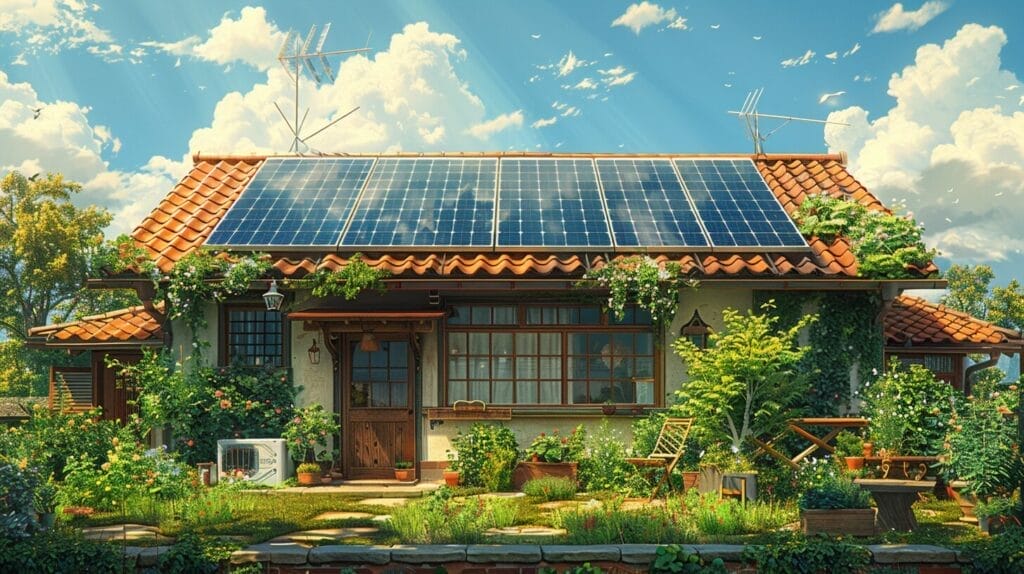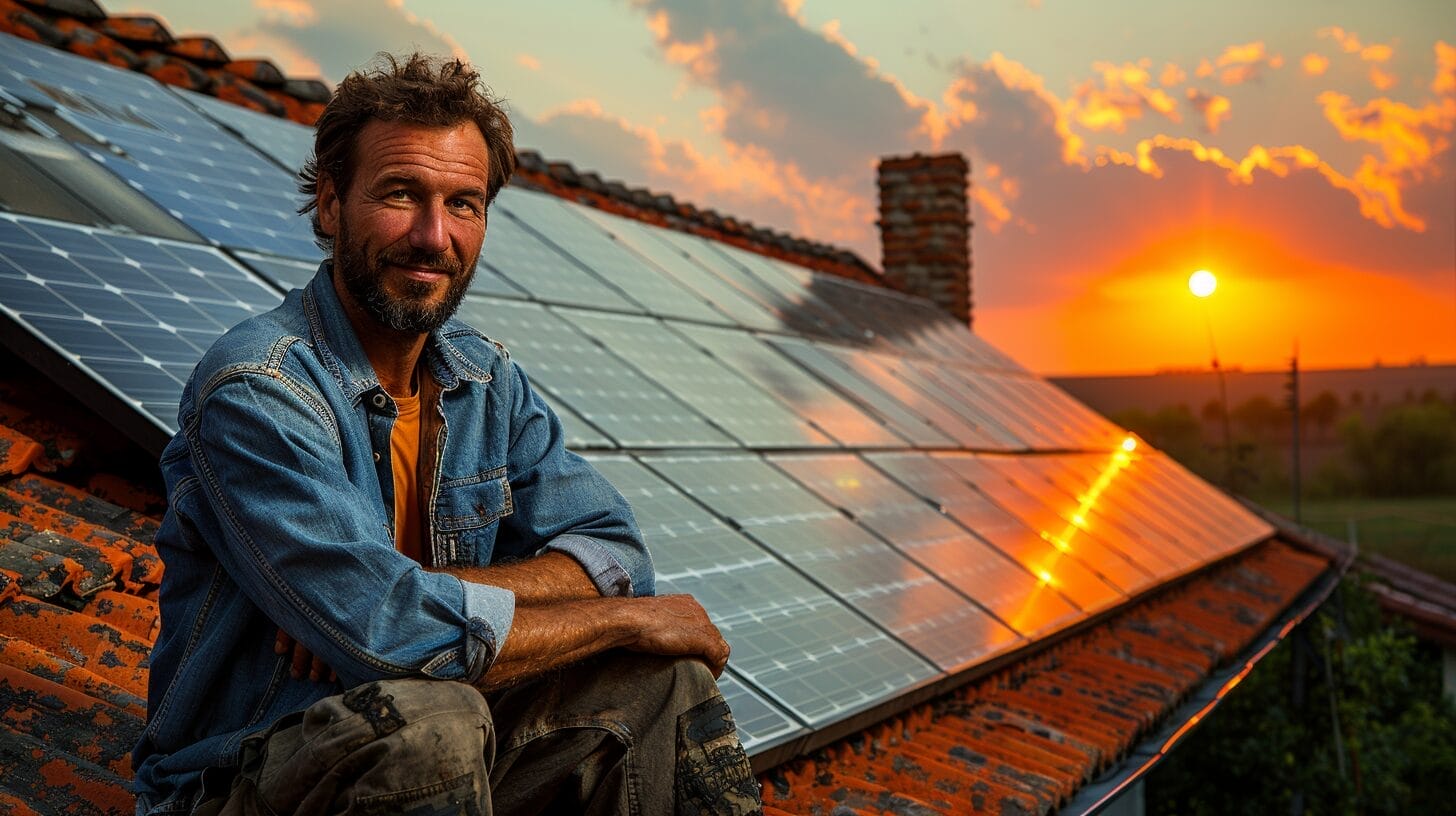How Do Solar Energy Work: Harnessing the Power of the Sun
When considering the use of solar energy, did you know that in just one hour, the sun radiates more energy onto the Earth’s surface than the entire population consumes in a year?
Harnessing this abundant power source is a fascinating endeavor that involves intricate mechanisms and technologies, including the installation of solar arrays for maximized electricity generation.
From the interaction of sunlight with solar panels to the conversion of that energy into usable electricity, the process is both complex and intriguing.
In our How Do Solar Energy Work guide, we will explore the inner workings of solar energy and how it is revolutionizing the way we power our world.
Key Takeaways
- Solar energy works by converting sunlight into electricity through photovoltaic cells.
- Solar power reduces reliance on fossil fuels and helps combat climate change by facilitating cleaner electricity generation through solar panels.
- Solar technology advancements, such as the introduction of thin-film solar panels, drive down costs and improve efficiency over time, making solar electricity more accessible to a wider audience.
- Harnessing solar energy offers long-term cost savings, control over energy production, and environmental benefits.
Introduction to Solar Energy: A Clean Energy Source

Solar energy emerges as a viable and sustainable solution to meet our increasing energy needs while minimizing harmful environmental impacts. Solar power stands out as a front-runner in the domain of renewable energy sources, providing a clean and efficient alternative. The best solar companies are at the forefront of this transformation, installing a number of panels that produce renewable energy from the sun.
Solar power offers a renewable and sustainable way to meet our energy demands without depleting finite resources or contributing to greenhouse gas emissions. The scalability and versatility of solar power make it a compelling choice for a wide range of applications, from powering residential homes to large-scale solar farms. The innovation and advancements in solar technology continue to drive down costs and improve efficiency, making solar energy an attractive option for a clean energy future.
The Role of Solar Panels in Generating Electricity

Solar panels, equipped with photovoltaic cells, play a critical role in converting sunlight into a sustainable energy source. These photovoltaic cells, which are a crucial component of thin-film solar panels, convert sunlight into electricity through a process known as the photovoltaic effect. This transformation happens silently and without producing any harmful emissions, making solar energy an environmentally friendly option for energy production.
The continuous improvements in thin-film solar cells and other technologies are paving the way for widespread adoption of solar energy as a clean and renewable power source.
The Science Behind Photovoltaic (PV) Panels

Photovoltaic (PV) panels harness sunlight to produce electricity. They are made up of layers of silicon, a semiconductor material that converts sunlight into electricity through the photovoltaic effect. The composition and structure of the solar cell capture and channel the flow of electrons to generate power.
Innovations in solar panel technology continue to improve the efficiency and affordability of harnessing solar energy. By converting solar energy into usable electricity, these panels play an essential role in the renewable energy landscape, offering a promising solution to our energy needs.
Solar panels, particularly those utilizing silicon solar cells, generate electricity efficiently, making them a cornerstone of renewable energy solutions and a sustainable source of energy for your home.
From Solar Panels to Your Home: The Role of Solar Inverters

Moving from the inner workings of photovoltaic panels, we now shift our focus to the essential role that solar inverters play in connecting solar energy systems to your home. Solar inverters are vital components in the solar energy system, responsible for converting the direct current (DC) electricity generated by your solar panels into usable alternating current (AC) electricity for your home appliances.
Here’s how solar inverters make it all happen:
- DC to AC Conversion: Solar inverters are the key players in transforming the energy from your solar panels into a form that can power your household devices. They efficiently convert the DC electricity generated by the solar panels into AC electricity, which is the standard form of electricity used in homes.
- Managing Excess Energy: In addition to converting energy, solar inverters also help manage any excess energy produced by your solar panels. This excess energy can be stored in batteries for later use or fed back into the grid, allowing you to maximize the benefits of your solar energy system.
- Powering Home Appliances: Once the electricity is converted to AC by the solar inverter, it’s ready to power your home appliances, lighting, and electronics. Solar inverters guarantee that the electricity generated by your solar panels is usable and seamlessly integrated into your daily energy consumption.
Different Types of Solar Energy Technologies

There are several innovative technologies available for harnessing solar energy. These technologies play a crucial role in solar energy production and are essential for the advancement of renewable energy solutions.
- Solar Panels: Utilize photovoltaic cells to convert sunlight into electricity.
- Solar Thermal Technology: Converts sunlight into heat to generate electricity or hot water.
- Concentrated Solar Power (CSP): Uses mirrors to concentrate sunlight onto receivers to produce electricity.
- Semiconductor Photovoltaic Cells: Converts sunlight into electricity using semiconductor materials.
- Hybrid Solar Systems: Combine different solar technologies for increased efficiency.
These innovations are driving the shift towards a cleaner and greener future.
Going Solar: The Impact and Benefits of Solar Energy

Embracing solar energy offers numerous environmental, economic, and energy independence benefits. Solar energy generation is a clean and renewable source of power, reducing our reliance on fossil fuels and leading to lower greenhouse gas emissions.
By generating electricity on-site, individuals and communities can reduce their dependence on centralized power grids. Investing in solar energy can lead to long-term cost savings.
Conclusion
To sum up, harnessing the power of the sun through solar energy is a clean and sustainable way to generate electricity for our homes and businesses. Installing solar panels is a key step in this process. By utilizing solar panels and inverters, we can reduce our reliance on fossil fuels and decrease our carbon footprint.
Embracing solar energy technology not only benefits the environment but also saves money in the long run. Let’s continue to support and invest in solar energy to create a brighter and greener future for all.
Frequently Asked Questions
How do solar panels work to generate electricity?
Solar panels work by converting sunlight into electricity using photovoltaic cells which create an electric field when sunlight hits them.
What is solar energy and how does it work?
Solar energy is power harnessed from the sun which is converted into usable electricity through solar panels, generating clean and renewable energy.
How are solar inverters used to convert DC electricity?
Solar inverters convert direct current (DC) electricity generated by solar panels into alternating current (AC) electricity, which is used to power household devices.
What is the process of capturing solar energy with solar technologies?
Solar technologies capture solar energy by utilizing solar panels to absorb sunlight and convert it into usable electricity for various applications.
How do solar panels generate excess energy and what happens to it?
Solar panels can generate excess energy when they produce more electricity than is currently being used. This surplus energy can be stored in solar batteries for later use or fed back into the electricity grid for credits.







